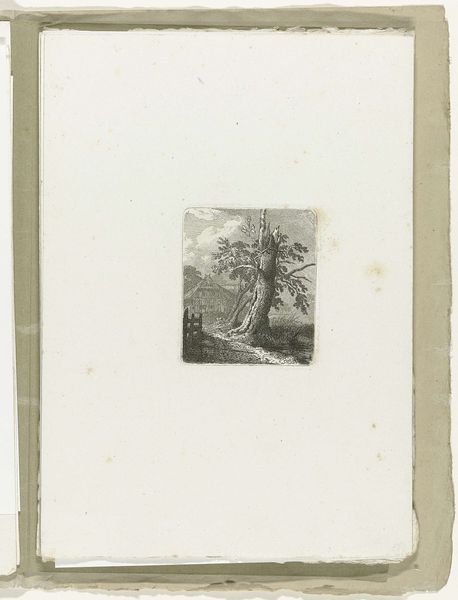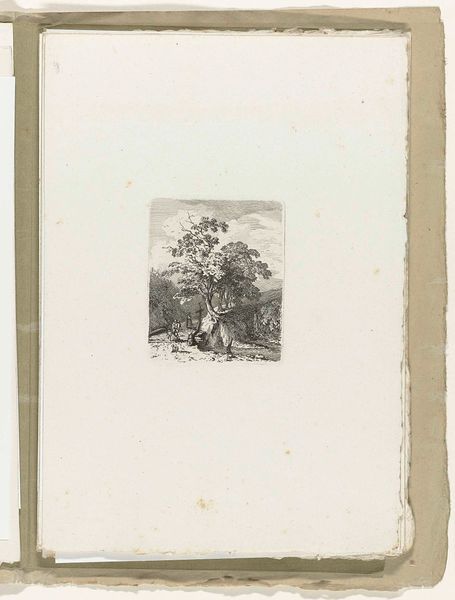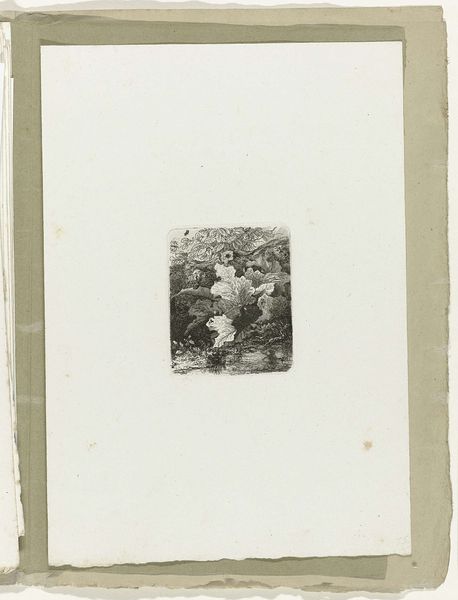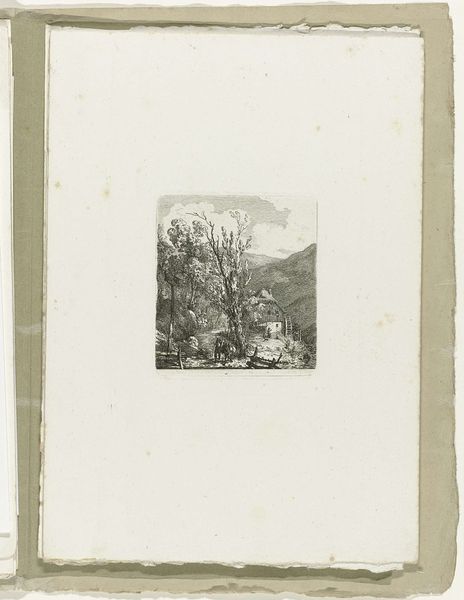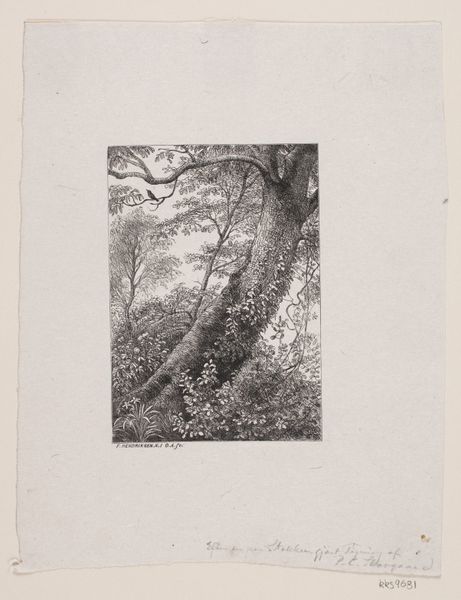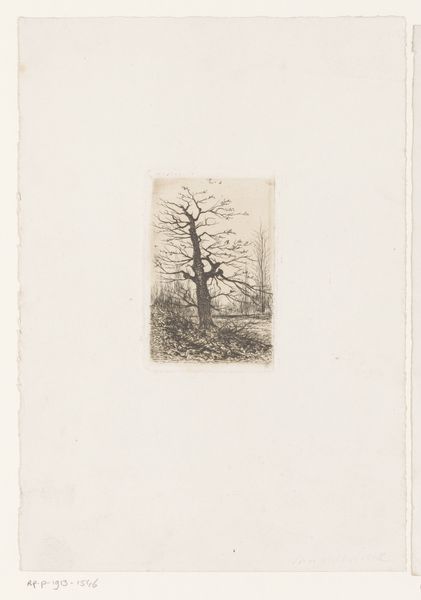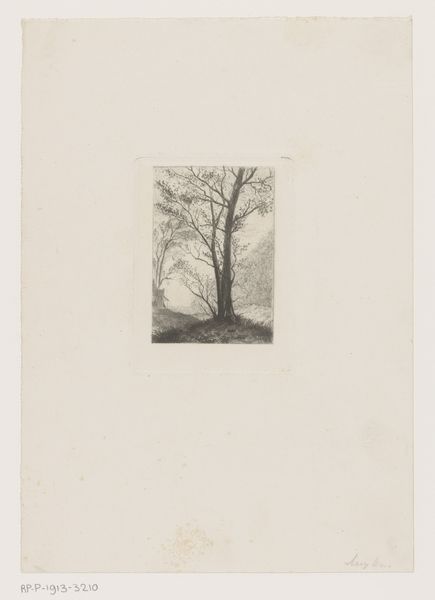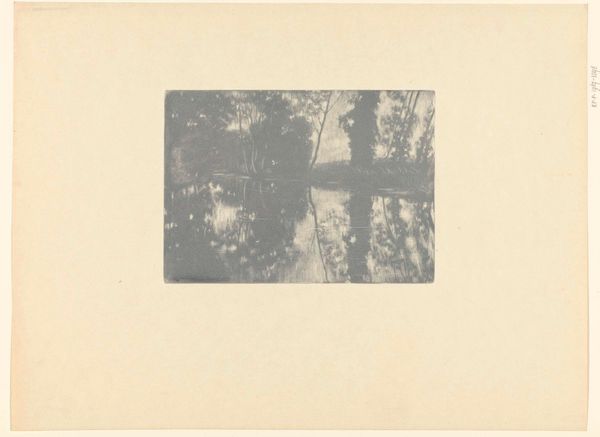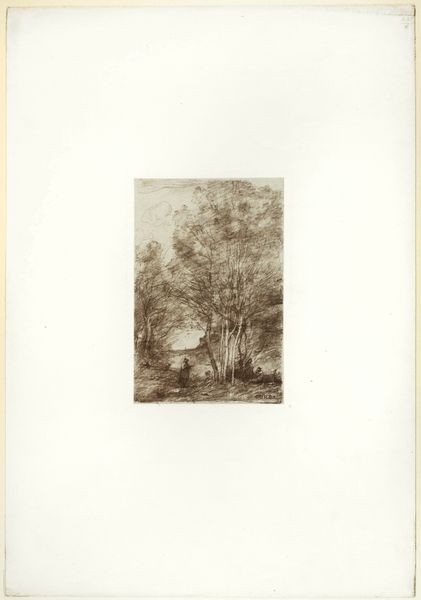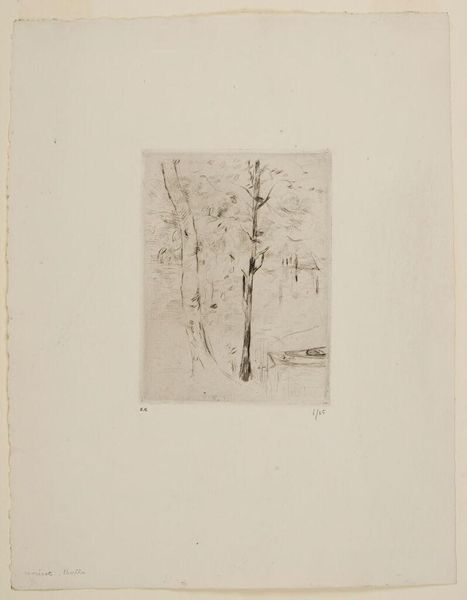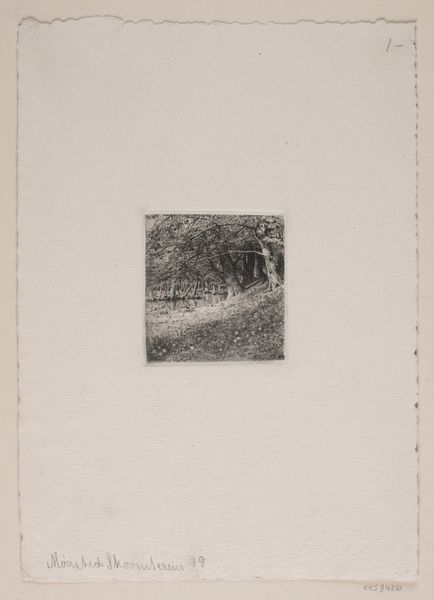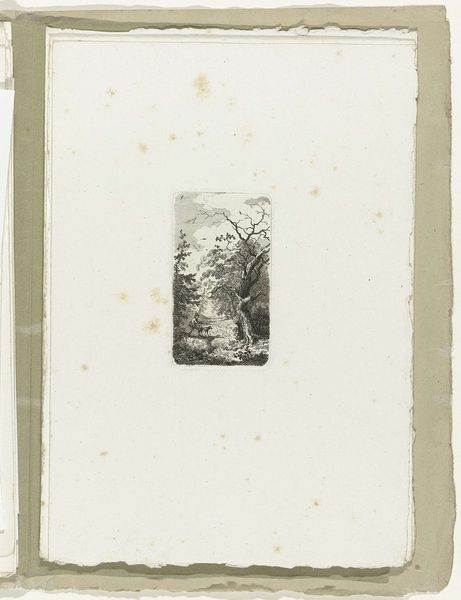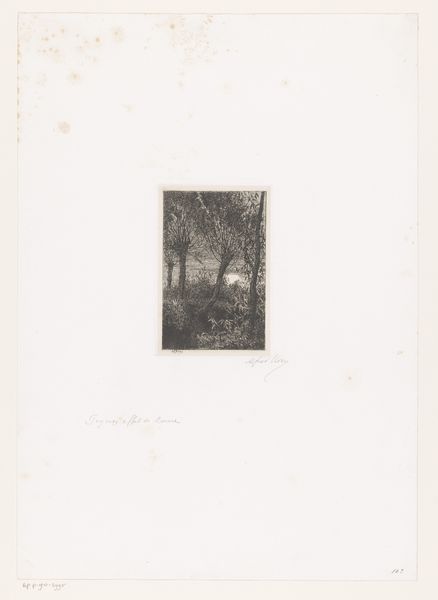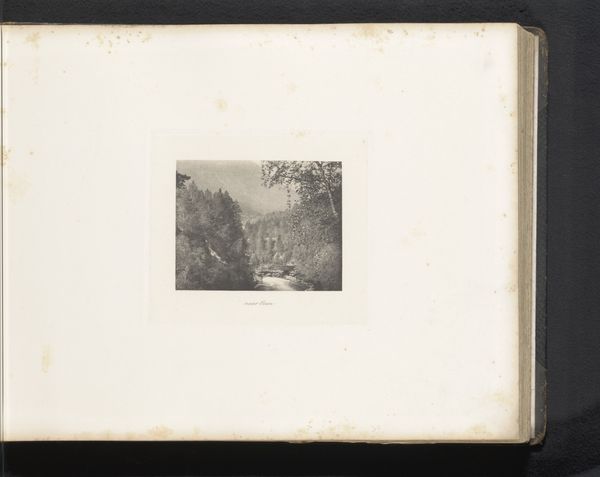
drawing, paper, ink
#
drawing
#
landscape
#
figuration
#
paper
#
ink
#
romanticism
Dimensions: height 84 mm, width 64 mm, height 280 mm, width 181 mm
Copyright: Rijks Museum: Open Domain
Curator: Here we have Carl August Lebschee’s “Wandelaar in een berglandschap,” or “Wanderer in a Mountainous Landscape,” created around 1827. It's an ink drawing on paper. Editor: Immediately, the high contrast grabs my attention. The texture feels rough, almost primal in its application. Considering it’s from 1827, it’s captivating how stark and dramatic the scene is rendered with just ink. Curator: Indeed. Think of the symbolic weight a lone wanderer carries within the Romantic movement. They represent humanity's relationship with the sublime and the individual's place within an awe-inspiring natural world. The wandering figure becomes a stand-in for larger philosophical questions. Editor: It makes me consider the labor involved, though. The artist meticulously hatching and cross-hatching, building up shadow and light. The ink itself – where did it originate? How was it processed? Was the paper handmade? Each mark signifies time and intentionality. Curator: That's beautifully put. Also, observe the placement of the tree in the foreground. The branches reach out as if welcoming or perhaps even warning the traveler, framing them within a broader landscape of existential uncertainty. It’s that contrast between nature's grandeur and humanity's smallness that resonates. Editor: I’m drawn to how small the work itself seems to be. What size paper did he choose and how did that intimate choice affect its reception? It emphasizes the preciosity of mark-making. Almost like he collected a feeling from nature and then meticulously brought it to life in ink back at home. Curator: Precisely. The scale amplifies the intensely personal experience that art can represent. Looking at it now, I am considering this piece as not only a picture, but rather as the idea of that experience itself. Editor: For me, focusing on materiality underscores not just the artistry, but the artist's hand itself – that direct connection with the landscape filtered through skill, available tools, and deliberate effort. It pulls history closer to the surface.
Comments
No comments
Be the first to comment and join the conversation on the ultimate creative platform.
